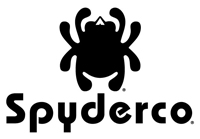Yes, stainless steel can also rust under certain conditions, even though it is normally very resistant to corrosion due to its chromium content.

Can Stainless Steel Rust? The Truth About Corrosion on Stainless Steel
Is stainless steel really rustproof, or is that a misconception? In our blog article, you’ll learn everything about stainless steel, the causes of rust on knife steel, and how to prevent and remove rust from your knives.
Stainless Steel Can Also Rust
Although stainless steel is generally very durable and highly resistant to corrosion thanks to its chromium content, it can rust under certain conditions. Simply put, chromium forms a thin, impermeable layer of chromium oxide on the surface. This layer prevents corrosion and protects your knife or other stainless steel items from rust. However, if this protective oxide layer is damaged, even stainless steel can rust.
Rust on Knives Is Harmless
My father used to say with a wink that grandparents would give children an apple with a rusty nail stuck in it to meet their iron needs. Whether that actually worked, I highly doubt. In short: Even though rust on knives, cutlery, or in the sink doesn't always look great, it poses no health risk. However, if parts are particularly rusty, you might be able to taste it – for example, if you prepare food with a heavily rusted knife.
What the Term Stainless Steel Really Means
There are many different types of “stainless steel.” By definition, however, stainless steel must meet some important criteria: It is made of steel, but contains at least 10.5% chromium and no more than 1.2% carbon. To enhance corrosion resistance and mechanical properties, elements such as nickel, molybdenum, sulfur, or manganese are often added. As a result, there are many different types of stainless steel, each with its own unique characteristics. You can find a great overview of the many different steels in our blog post "Knife Steels".
Can Stainless Steel Rust?
It sounds paradoxical, but yes, stainless steel can indeed rust. The term “stainless” doesn’t mean that the steel will never rust, but rather that it is less prone to rust than other types of steel. For example, if you don’t clean and dry your knife after use, even stainless steel can rust.

Why Does Stainless Steel Rust?
Stainless steel can rust under certain everyday conditions – even if you’ve chosen a stainless or corrosion-resistant knife.
Here are some of the most common causes:
- Sea air, a mixture of salt and moisture, can attack stainless steel and cause your knife to rust. But even sweat from your hands can contribute to rust forming on your knife.
- Acids from fruits like apples or citrus fruits can cause rust if you don't clean your knife thoroughly after use. The acid attacks the protective layer of the steel and promotes corrosion.
- Moisture after cleaning your knife should be avoided. Don't leave your knife wet – dry it thoroughly.
- With fixed-blade knives, make sure not to store them wet in a leather or Kydex sheath. And don’t fold a wet pocketknife – it needs sufficient air circulation to dry completely.
- Last but not least: the dishwasher. The combination of high temperature, salt from detergent tabs, water, and built-in aluminum parts can damage the passive layer of stainless steel. This causes knives to rust more quickly – even if they are stainless.

How to Protect Your Knife from Rust
To protect your knife from rust, it’s important to clean the surface regularly and take good care of it. Good to know: Even leftover food residues can lead to rust spots. Special cleaning and protective products, such as KPL Knife Shield, can help keep the passive layer intact and protect your knife as effectively as possible.
Our tip: In our blog post Sharpening & Caring for Pocketknives, we show you what to pay attention to when maintaining your knife – including helpful tips and tricks.
Small Rust Spots – What Can Help
If rust spots have formed on your knife, you can first try to wash your knife with hot water and gently clean it with a sponge. Be careful not to scratch the blade. If that doesn’t help, you can try to remove the rust spots using a cleaning or polishing paste. Afterward, be sure to thoroughly clean and care for the surface.

Conclusion: With Regular Care, Your Knife Stays Beautiful and Rust-Free
To protect your knife from rust, it’s important to clean the surface regularly and maintain it properly. Good to know: Even food residues can lead to rust spots. Special cleaning and protective products, such as KPL Knife Shield, can help keep the passive layer intact and protect your knife as effectively as possible.
Does Aluminum Rust?
Aluminum doesn’t rust in the traditional sense like iron or steel. Instead, it forms a thin layer of aluminum oxide when exposed to oxygen. This layer protects the underlying metal from further corrosion. Brass and copper develop a darkening patina over time, but this is not harmful.
FAQ: Frequently Asked Questions About “Does Stainless Steel Rust?”
Aluminum does not rust like iron, for example – it forms a protective oxide layer that shields the metal from further corrosion.
There is no stainless steel that cannot rust. Every type of steel has its limits – including when it comes to corrosion resistance. Magnacut, for example, offers excellent rust resistance when properly heat-treated.


















